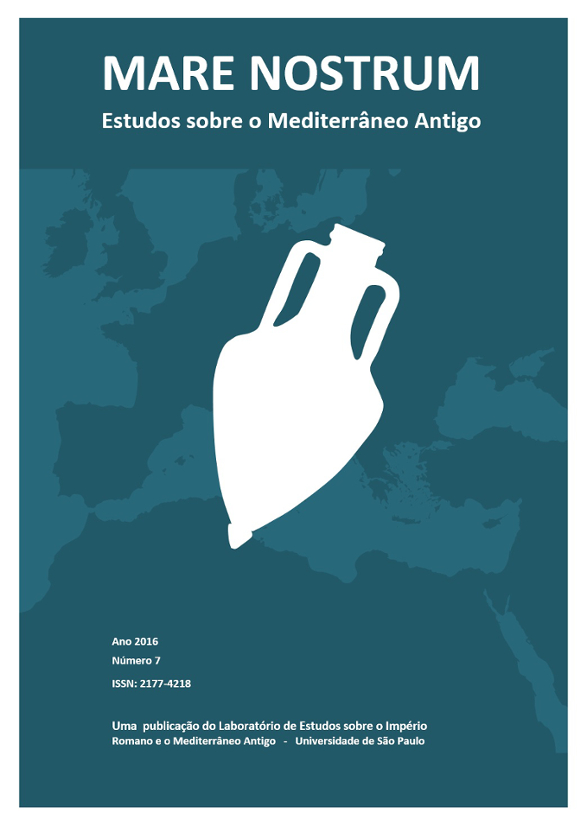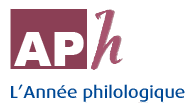Cílax de Carianda, Pseudo-Cílax e o Périplo de Paris: reavaliando a tradição antiga de um texto geográfico
DOI:
https://doi.org/10.11606/issn.2177-4218.v7i7p1-19Palavras-chave:
Geografia grega antiga, periplografia, Cílax de Carianda, Marciano de Heracleia, Paris. suppl. gr. 443Resumo
O Périplo, preservado no manuscrito Parisinus suppl. gr. 443 e erroneamente atribuído a Cílax de Carianda (sexto século a. C.), é o mais antigo espécime da periplografia grega antiga. Ele pertence ao quarto século antes de Cristo. No presente artigo, todos os testemunhos da tradição antiga tanto de Cílax quanto do Périplo de Paris são cuidadosamente avaliadas. O objetivo é determinar quando e por que o Périplo de Paris foi equivocadamente atribuído a Cílax e dissipar qualquer dúvida da suposta autoria deste trabalho geográfico antigo. A confusão, ou a falsificação deliberada, é evidente em Estrabão: ele sabia que a viagem de Cílax para o Oriente e, ao mesmo tempo estava familiarizado com o texto do Périplo de Paris, que ele atribui ao antigo navegador. Autores gregos e latinos da Época Imperial Romana conheciam o Périplo de Paris, mas muitos seguiam cegamente a atribuição equivocada a Cílax de Carianda. Quando Marciano de Heracleia no período Bizantino Antigo coletou seu corpus de geógrafos gregos antigos, ele também atribuiu o Périplo de Paris a Cílax, assim transmitindo o erro aos copistas do Paris. suppl. gr. 443.Downloads
Os dados de download ainda não estão disponíveis.
Downloads
Publicado
2017-03-27
Edição
Seção
Artigos
Licença
Os conteúdos expressos nos textos publicados pela Mare Nostrum são de exclusiva responsabilidade de seus respectivos autores.
A reprodução dos textos editados pela Mare Nostrum é permitida sob licença Creative Commons, Atribuição-NãoComercial (CC BY-NC).
Autores que publicam nesta revista concordam com os seguintes termos:
- Autores mantém os direitos autorais e concedem à revista o direito de primeira publicação, com o trabalho simultaneamente licenciado sob a Licença Creative Commons Attribution que permite o compartilhamento do trabalho com reconhecimento da autoria e publicação inicial nesta revista.
- Autores têm autorização para assumir contratos adicionais separadamente, para distribuição não-exclusiva da versão do trabalho publicada nesta revista (ex.: publicar em repositório institucional ou como capítulo de livro), com reconhecimento de autoria e publicação inicial nesta revista.
- Autores têm permissão e são estimulados a publicar e distribuir seu trabalho online (ex.: em repositórios institucionais ou na sua página pessoal) a qualquer ponto antes ou durante o processo editorial, já que isso pode gerar alterações produtivas, bem como aumentar o impacto e a citação do trabalho publicado (Veja O Efeito do Acesso Livre).
Como Citar
Cílax de Carianda, Pseudo-Cílax e o Périplo de Paris: reavaliando a tradição antiga de um texto geográfico. (2017). Mare Nostrum, 7(7), 1-19. https://doi.org/10.11606/issn.2177-4218.v7i7p1-19









